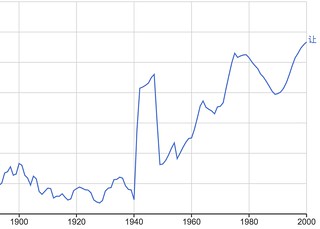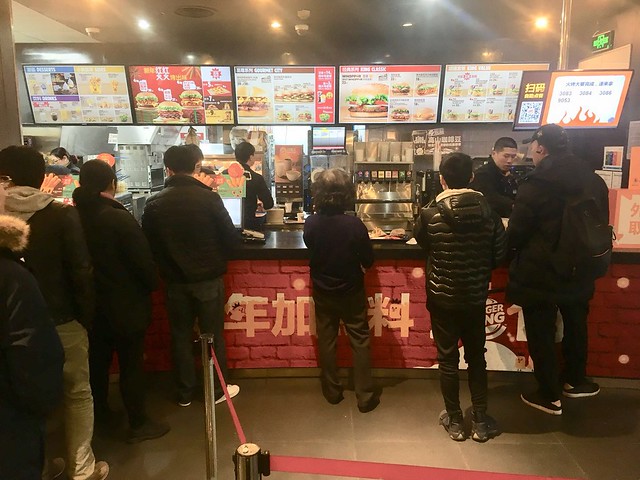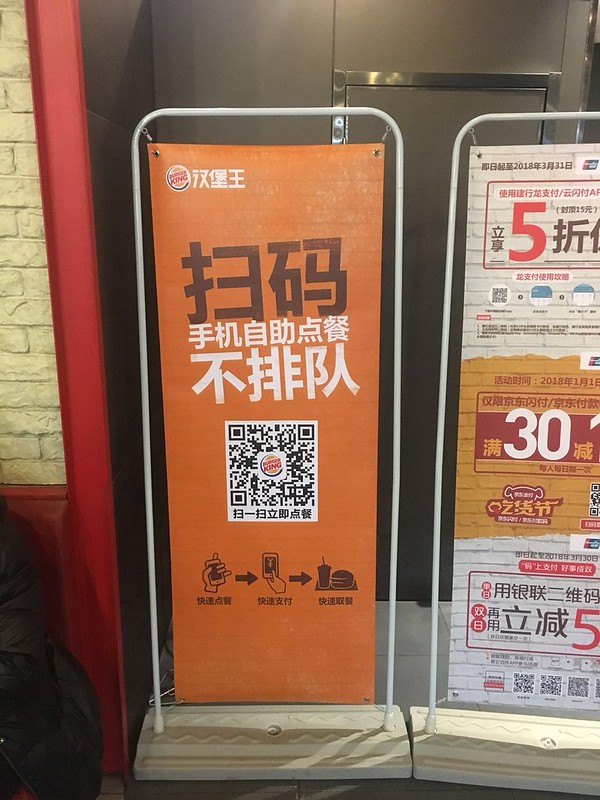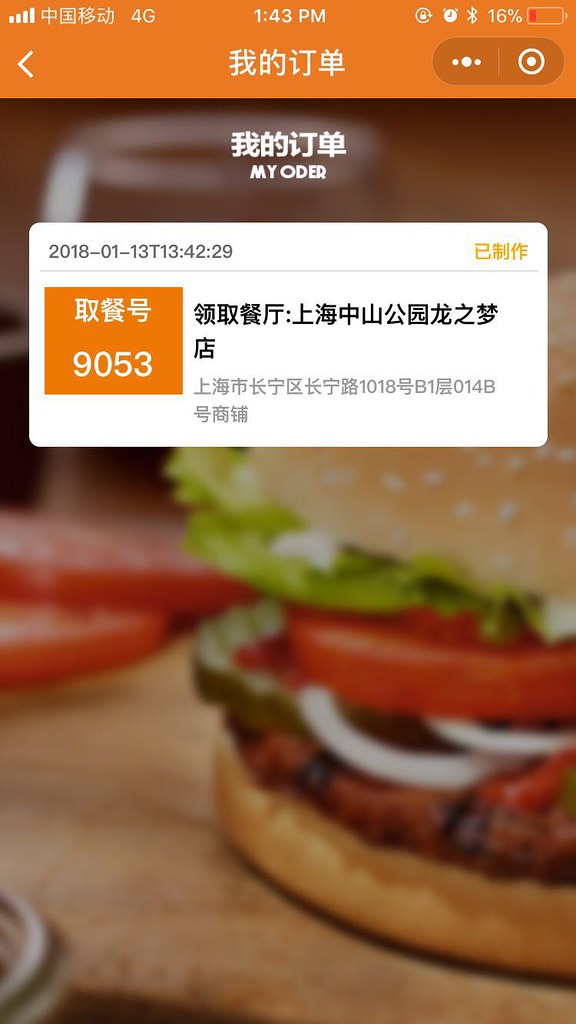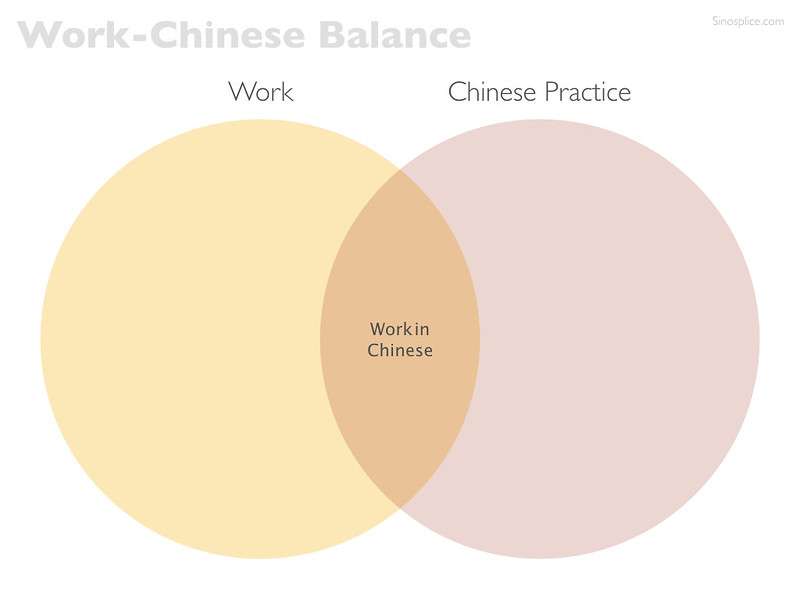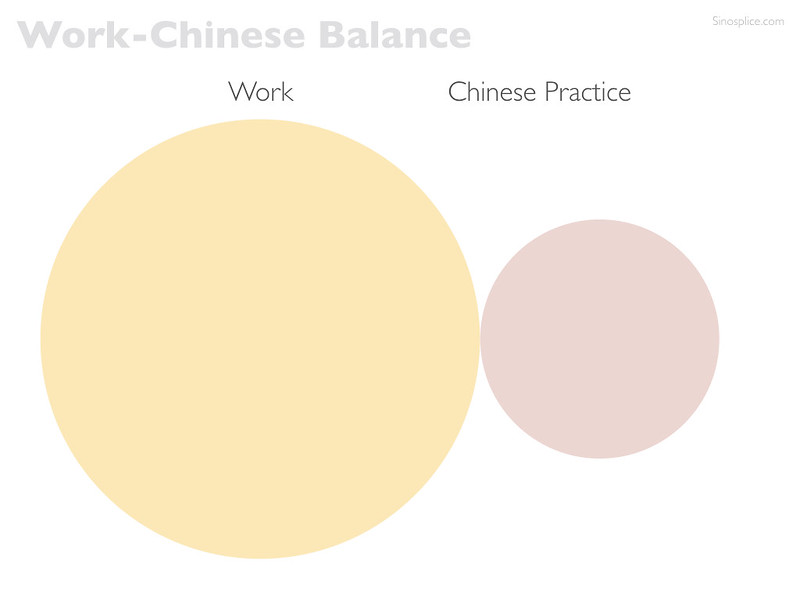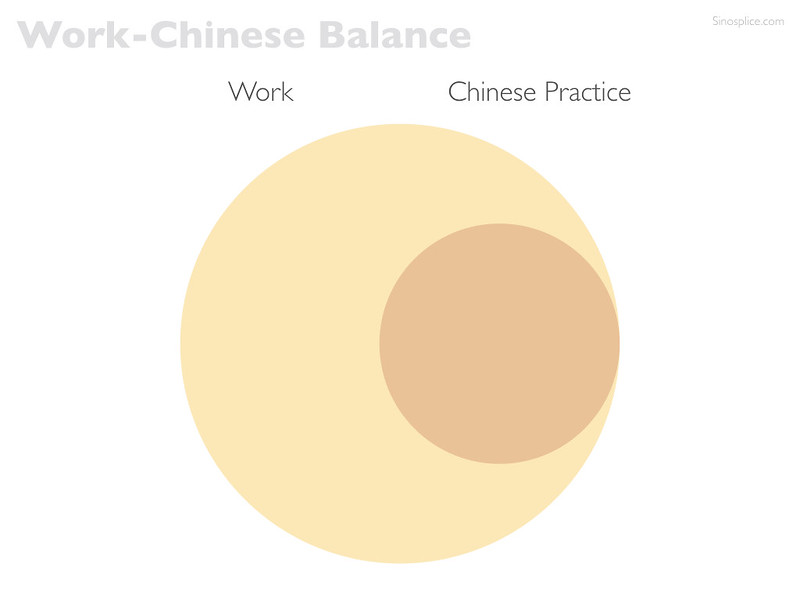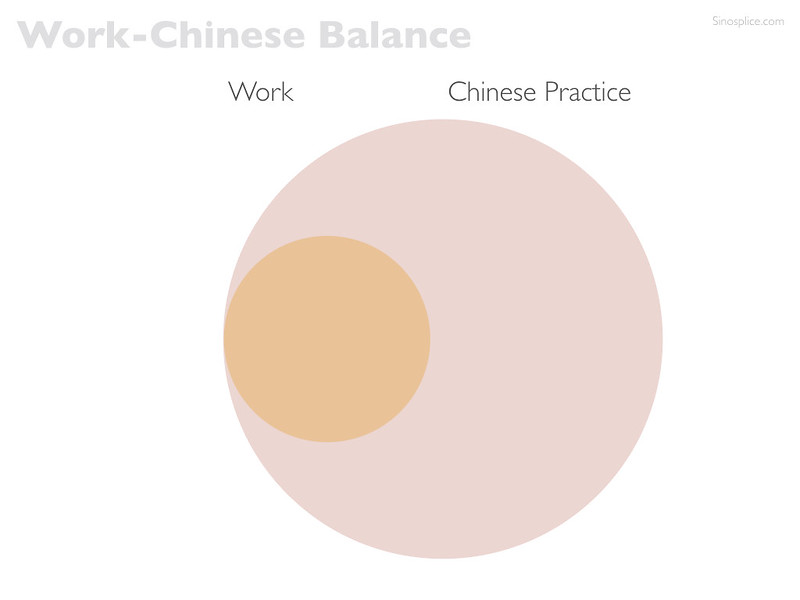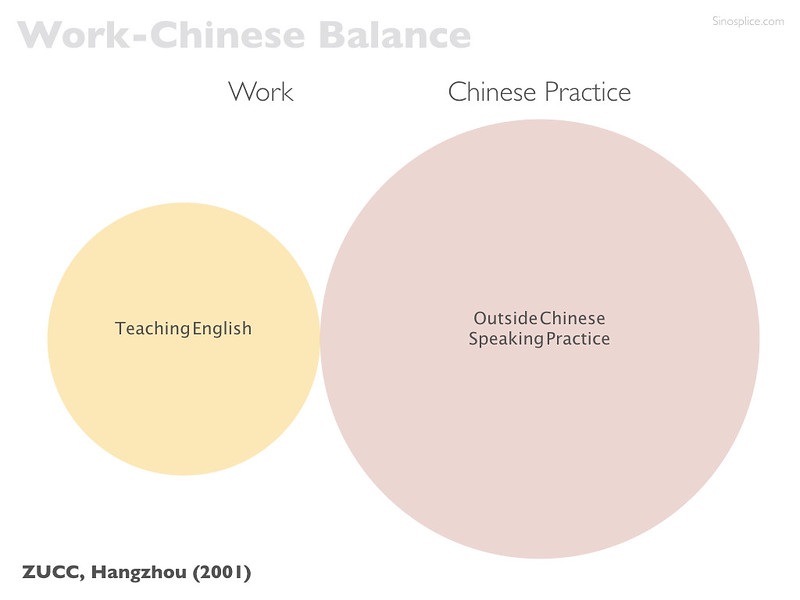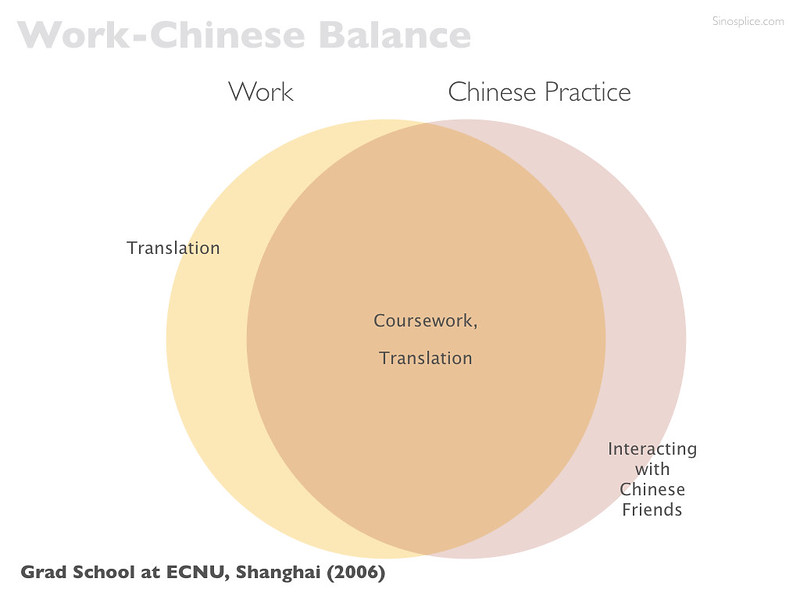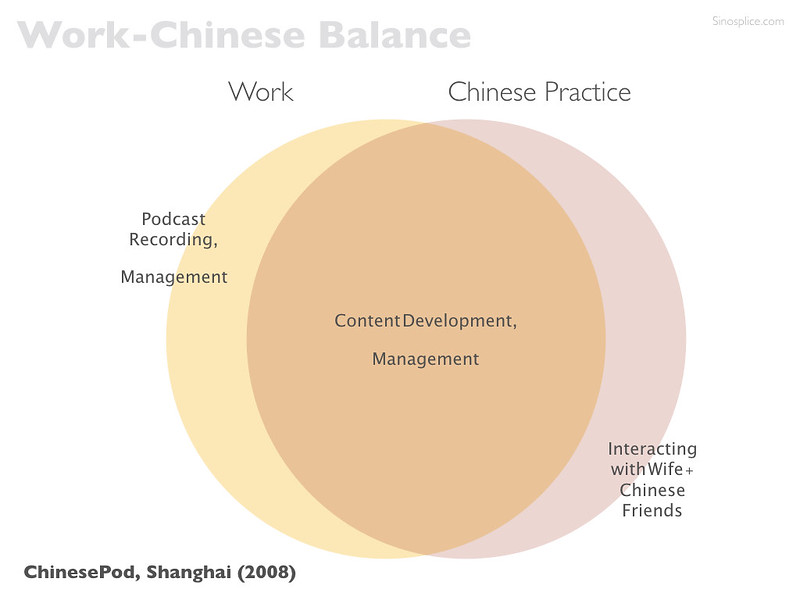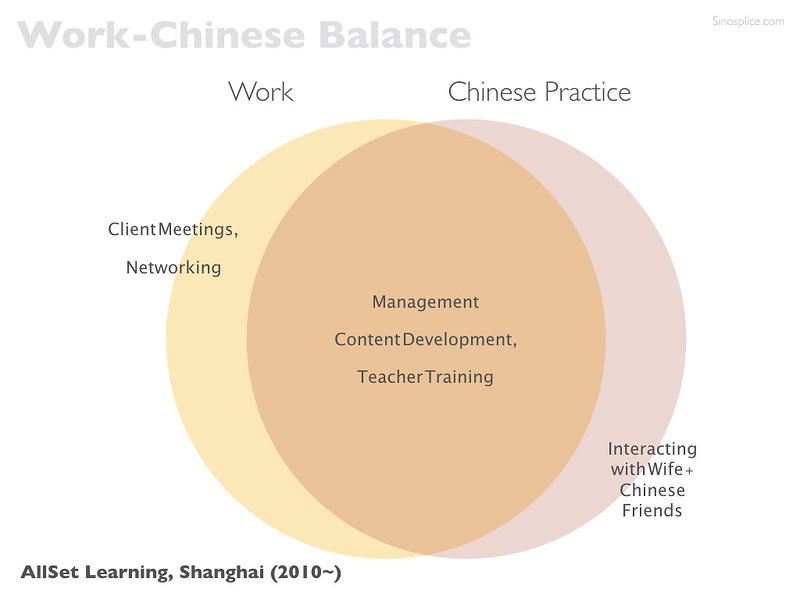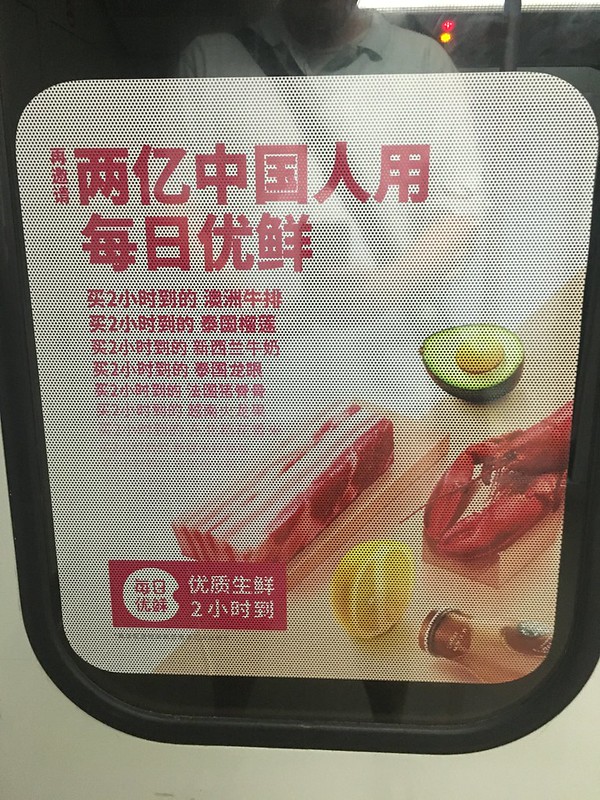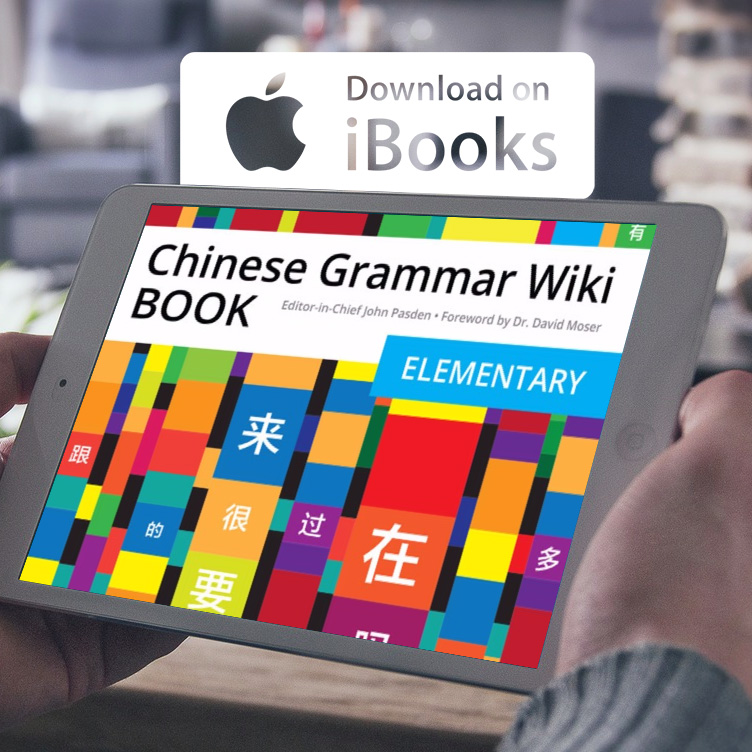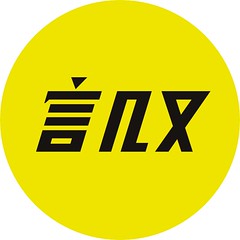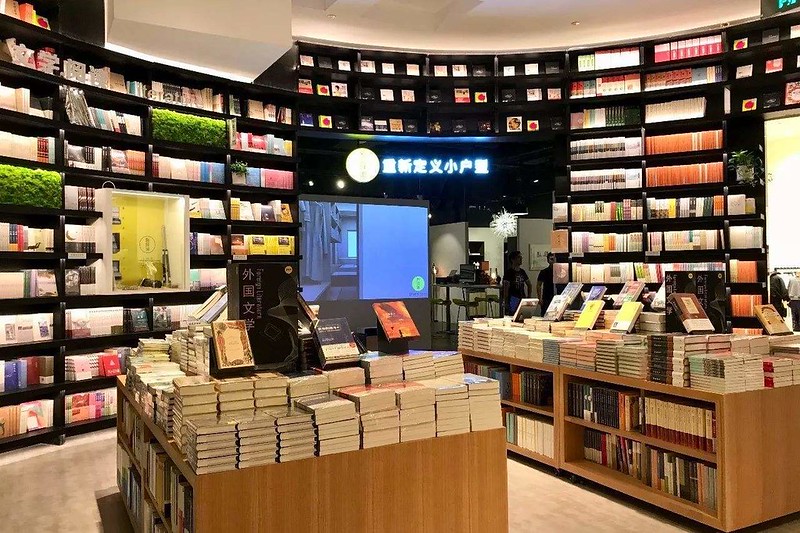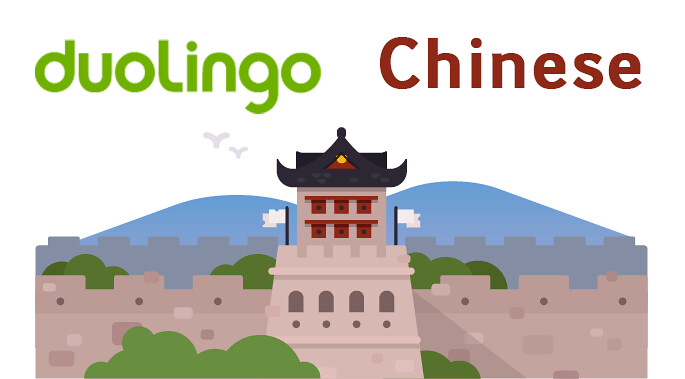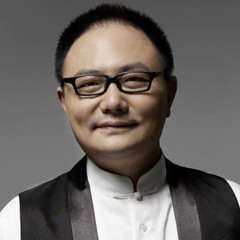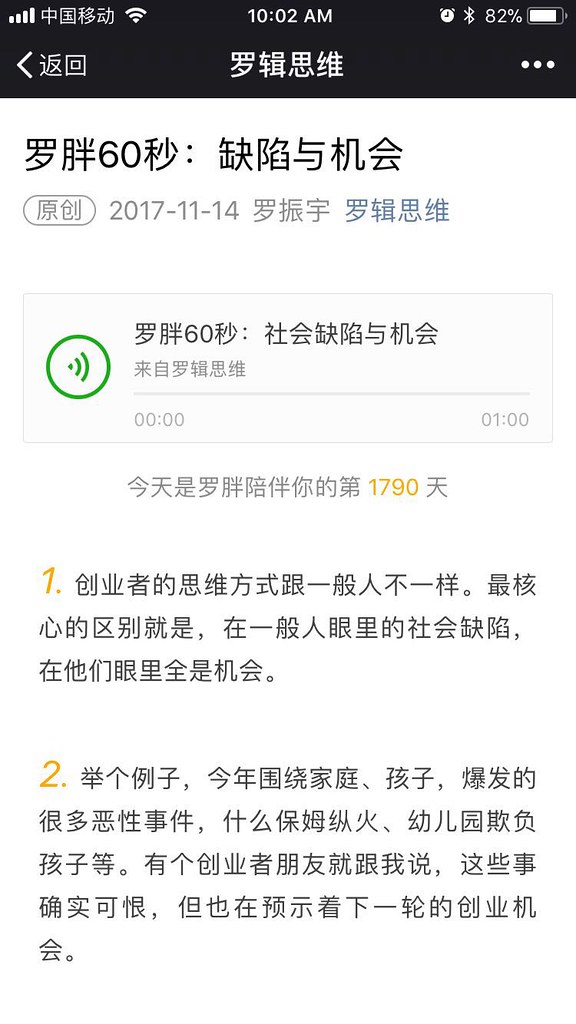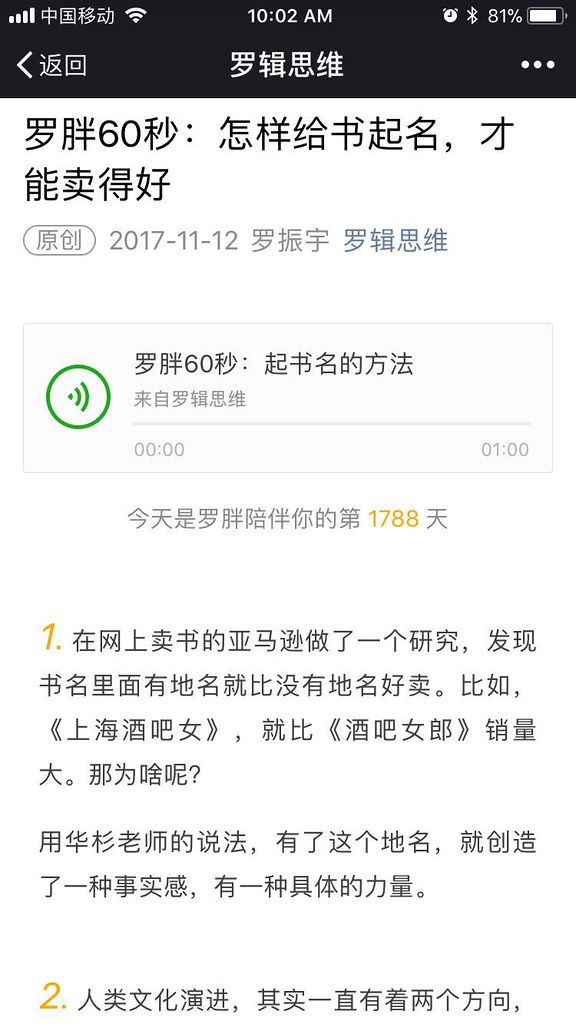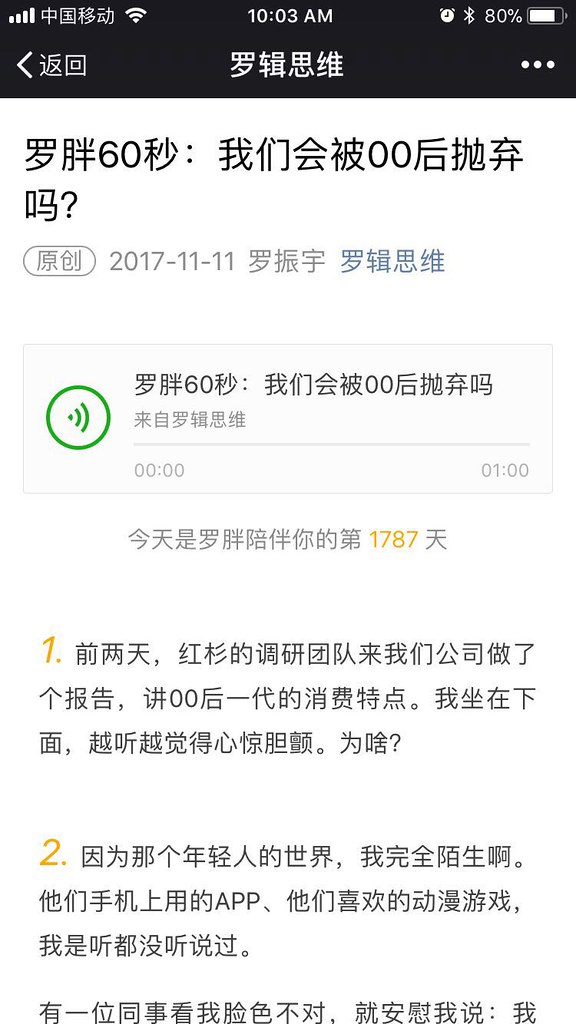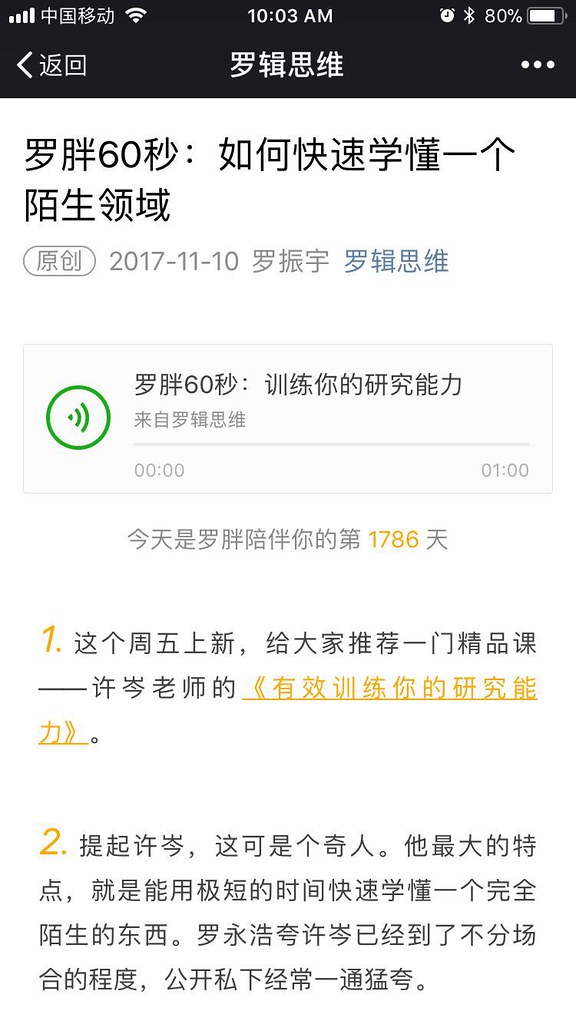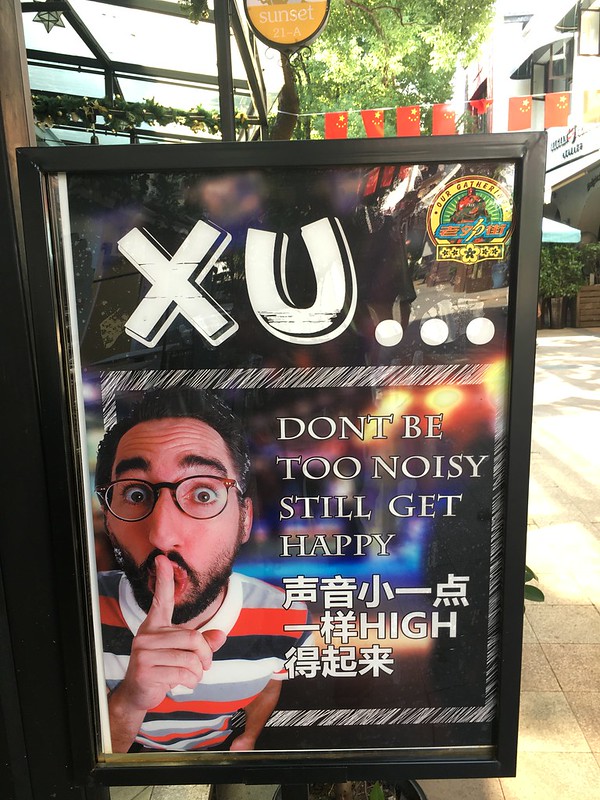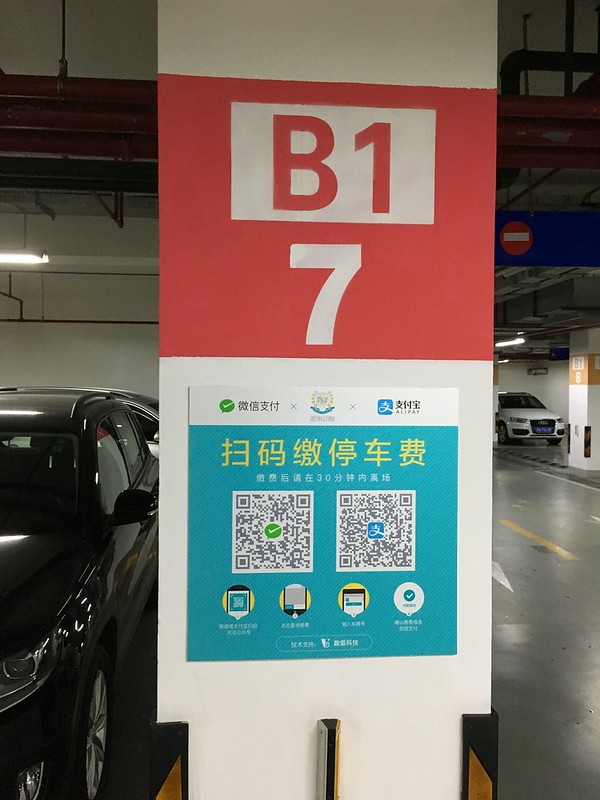07
Feb 2018Chinese Doctors
I’m on day 3 of a pretty heinous fever flu thing, and day 2 brought me to a Chinese hospital, late at night. Not an international hospital, but a pretty decent public one. Chinese hospitals are hard because there are always so many people there, and the process is broken down into multiple steps, most of which require taking a number and waiting. So you spend a lot of time waiting with a lot of other sick people. Not fun.
This time, however, I was struck by how patient and professional my doctor was. So often, the doctors are pretty stressed out, seeing cranky patient after cranky patient in a never-ending stream of patients. So the doctors are testy and not terrible forthcoming with information. While this is understandable, it’s certainly not a good experience for a sick person and their concerned family members. And when you get a professional, patient doctor, you really take notice.
I don’t think it’s easy to become a doctor in any country, but in China, the reward for the dedication seems especially paltry. Or, if “helping people,” is all you ever wanted, and that feeling is like a refreshing sip of cool water, you’re suddenly getting a firehose in the face.
I’d be curious to hear the opinion of anyone familiar with both systems: is it way harder to be a Chinese doctor? Is it less rewarding financially? I know it’s not easy being a doctor in any society, but I have trouble imagining either of those answers being “no.”
01
Feb 2018The Chinglish that Creeps in
My daughter is 6 years old now, and aside from yearly trips to Florida, she’s grown up entirely in Shanghai. Her school is a Chinese school, not an international or bilingual school, when means that I’ve had to make extra efforts if I want her to grow up bilingual. I’ve always practiced “One Parent One Language” (“OPOL”), meaning that I never speak to my daughter in Chinese, even though I’m observing her acquisition of both Chinese and English with keen interest.
I’ve written about my daughter’s acquisition of Chinese grammar in the past, but today I want to comment on how her mastery of English has been affected by her Chinese acquisition and mostly Chinese environment.
Since she’s grown up in Shanghai and attends a school where Mandarin is spoken most of the time, it’s safe to assume that my daughter’s Chinese language skills are going to be a bit more dominant. For example, I get the feeling that she’s mastering irregular verbs a bit more slowly than American kids might. I’m not worried about it; her accent is fine, and she sounds like an American 6-year-old most of the time. I’ve certainly never felt she was making mistakes that Chinese learners of English might make. …until recently.
In the past few months I’ve noticed that my daughter confuses the words “make” and “let” in her English. This is a mistake frequently made by Chinese learners of English. In Chinese, 让 has both meanings, and context makes the rest clear. In English, if you don’t get these words straight, your English sounds quite weird (and non-native). So I definitely took notice when my daughter said things like:
- *”She was really mean, and let me cry.”
- *”He always lets me laugh.”
- *”What you said let me angry.”
In every case, the word “make” should be used, and the word “let” is used instead. (I’ve never observed the confusion going in the other direction.) She’s generally receptive to corrections of her English (she catches on pretty quickly when I correct her on her usage of irregular verbs, for example), but this one has been a bit more stubborn.
I’m curious: do any monolingual (or at least not growing up in China) English-speaking kids make this mistake? Or is it something particular to this situation? I expect it will works its way out in time, and I’ll be interested to see if the same thing happens with my son (who is now 3).
25
Jan 2018Skipping the Line at Burger King with WeChat
One of the interesting things about living in Shanghai is seeing new technology integrated into daily life across the city fairly quickly. Two significant recent examples include mobile payments (WeChat, AliPay) and bike sharing (Mobike, Ofo). But WeChat is enabling lots of other cool changes as well.
The other day I went to Burger King and there was a fairly long line.
I noticed this banner telling me to scan the QR code and order on my phone to skip the line:
扫码
手机自动点餐
不排队
I don’t always go for this kind of thing, as sometimes the “quick and convenient” way ends up being more hassle (the Shanghai Metro’s recent launch of QR codes for subway ticket payments is a great example of that). But this time I decided to give it a shot.
It was, indeed, easy and fast, and I think I got my order sooner than I would have had I stayed in line.
It was pretty clear to me that Burger King is essentially using the same system used to prepare orders for delivery guys: the user orders on the app, and the delivery guy picks it up in the window. This implementation is simply combining the two for one user. And it utilizes WeChat, so it’s not even a totally separate iOS or Android app. The only flaw I saw was that it didn’t auto-detect which store I was in; I had to choose it. Had I accidentally chosen the wrong location, that would have been quite annoying for both sides.
Still, interesting to see this. McDonalds in Shanghai has had touchscreen order kiosks for a while, but shifting the ordering to WeChat (which virtually every consumer in Shanghai uses) adds a new level of convenience.
17
Jan 2018Work-Chinese Balance
You hear a lot about the “work-life balance,” and what I want to discuss here is similar, but related to Chinese learning, of course. I’m drawing upon my own experience, as well as the experience of hundreds of clients at AllSet Learning, most of whom are learning Chinese for work-related reasons. Since most of my clients live and work in China, we’re talking about a natural second language learning situation (learning while immersed in the target language environment). Theoretically, at least, they could be using Chinese for their work, in some capacity.
Hence the term “work-Chinese balance.” If you live and work in China, how much do you use Chinese on the job? The answer could range from not using a word of Chinese ever (this is quite common for expat executives working for multinational corporations in Shanghai, for example) to using Chinese all day every day as part of the job.
It should come as no surprise that regularly using Chinese on the job results in much faster learning. Combine that with a practical, customized course of study focused on their work content, and progress can be extremely rapid. This is what I strive to help each of my clients achieve.
Can I have some Venn diagrams with that?
Time to Venn it up! Before getting into my own personal situation, let me just lay out some possible scenarios.
For many of my clients, they can use some Chinese on the job. The challenge is to use their Chinese more effectively, and to expand the scope of work which can be performed in Chinese. So it’s common to have this kind of situation, where some Chinese is used at work, but a lot of Chinese practice happens outside of the work place, and a lot of work is performed in English (or at least, not Chinese):
Worst case scenario is where the client doesn’t use Chinese for work at all, and maybe doesn’t practice much outside of work either (sizes are not meant to be exactly proportional here):
It’s also possible that a client could ONLY use Chinese at work, but only for part of the job:
The opposite would be rarer: the client basically lives in Chinese, and that includes work. (Someone in a situation like this probably already has quite advanced Chinese. This situation would be more common for, say, an immigrant to the USA learning English than an expat in China learning Chinese.)
My Own Work-Chinese Evolution
I thought it would be interesting to chart my own work-Chinese evolution, since I’ve succeeded in gradually integrating Chinese into my career more and more over the years, and it helped me get my Chinese up to a high level. Let’s take a look…
When I first arrived in China I taught English in Hangzhou. I didn’t use any Chinese for my job, but I actually didn’t work a lot of hours every week, so I spent a ton of time studying and practicing Chinese in my free time.
After moving to Shanghai in 2004 I worked for a company called Melody. I was building on my English teaching experience, but starting to work Chinese into my job. This was an exciting time, and I made full use of the opportunities. My Chinese improved a lot, and I even had to speak Chinese on stage, in front of hundreds of teachers, for pronunciation training. A little pressure can be good!
I had to work hard to get into a Chinese grad school program in applied linguistics, and once I did it, I switched to a part-time job doing translation. This was good reading comprehension practice for me, but since I was producing written English and not speaking Chinese, I don’t consider it full “work immersion,” and for the purposes of this article I’m more concerned with speaking. You could also say that my grad school coursework was my full-time “job” at the time (I was on a student visa), and for that, I was fully immersed in Chinese. I got more listening and reading practice than anything, but it was still beneficial to my development, especially in sophisticating my vocabulary and upgrading my academic reading comprehension to adult-level.
Next came my 7+ year stint at ChinesePod. This was a lot of fun, and although I used a fair amount of English to communicate with upper management and other non-Chinese staff, I was also immersed in Chinese for most of my work. I got to geek out discussing linguistic issues on a regular basis. I was able to really flesh out my knowledge of Chinese, making it much more detailed. As a non-native speaker in the industry of teaching Chinese, the constant and long-term incrementing of my metalinguistic knowledge of Mandarin was super useful. I also got to have fun directing the creation of tons of lessons, which had its own learning benefits (frequently cultural).
Finally, I arrive at my current job at AllSet Learning. As a consultant, I’m in frequent contact with my clients, including face to face meetings, and most of that is in English. I also manage all the development of resources like the Chinese Grammar Wiki in English. But a ton of my work is spent working with Chinese teachers and other staff in Chinese. This also includes tasks like teacher training.
As the boss, I actually have control of what I do and what I use Chinese for. I made a choice early on for all office communications to be in Chinese, and I continue to benefit from this (you really never stop learning, as long as you keep paying attention). I even talk to our non-Chinese interns in Chinese! (OK, we do also have some English meetings outside the office.)
Final Thoughts
If you’re living and working in China, definitely give some thought to your own work-Chinese balance. It could make all the difference.
If you’re learning Chinese outside of China, all is not lost. This isn’t the only path, but it can be the most straightforward. (On the other hand, if you did something radical and got a job in China, then you could pursue something like this, and you wouldn’t be the first to be so “crazy.”)
For a related post on mixing “practice” (often work) and “study,” see also: How I Learned Chinese (part 4).
10
Jan 2018Turbo Bandwagon
This ad made me wonder: cultural differences aside, is the bandwagon effect stronger in China because there’s a larger population? Similarly, is the bandwagon effect more powerful when used in advertising in China?
The ad reads:
两亿中国人用每日优鲜
200 million Chinese people use Miss Fresh
The brand name is 每日优鲜, which could be translated to something like “Daily Excellent Fresh.” But then they called themselves “Miss Fresh” in English, so that’s the name I used.
13
Dec 2017Reading Pros and Panda Toes
I was pleased to be contacted recently by Katie, the author of a new blog related to learning Chinese called Panda Toes. She’s based in Beijing, and has already gotten through the hardest parts of learning Mandarin, so she’s interested in sharing tips to help build reading fluency.
Your first thought might be, “to get better at reading Chinese, don’t I just need to read more Chinese?” Well, yes. No one’s going to argue with that logic. But even putting aside the crucial question of what a learner should read on her own, there are some techniques that can make the whole process less painful and more productive.
I really like how in her first article, The Art of Reading Chinese (as a non-native speaker), Katie gives a lot of emphasis to recognizing names (both Chinese and foreign). This point absolutely deserves a lot of attention, and it’s something I remember being tripped up by repeatedly, back in the day. (My time in the news translation trenches did me a lot of good in that regard, but it was most definitely not fun work.)
To add to Katie’s point, I’d like to emphasize it is most definitely worth your time to spend a bit more time learning Chinese names and their structure. While you shouldn’t make a big flashcard deck and memorize ALL THE NAMES, you should be gradually gaining familiarity with common names and common name structures. But how does one do this?
- Learn your Chinese friends’ names. Really learn them. Every character, every tone. Ask why they were named that, and ask if it’s an unusual name, or a “typical Chinese name.” If their name contains certain characters that almost exclusively appear in people’s names, identify those as such. This learning is reinforced by your personal relationship with the person; this same knowledge-gathering would not be as effective on a group of random Chinese people.
- Learn some famous Chinese names. Again, be selective. These should be names that have some meaning for you. If you like talking about politics, then learn politicians’ names. Same goes for Chinese movie stars, singers, directors, etc. You can gradually expand this list over time. As you do, make note of patterns. For example, the name 章子怡 (Zhang Ziyi). Did you know that there’s a “A子B” naming pattern? Almost all Chinese people will be familiar with it, and sooner or later you need to be too.
- You need to know the super common Chinese surnames (again, learn them over time), but you also need to know that some super common words or characters can also be surnames. It really through me for a loop the first time I ran into surnames like 文, 水, 米, 左, or even 门.
- Ask your Chinese friends what they think of other people’s names. This is especially easy to do when you’re trying to come up with your own Chinese name, or naming a baby, but it’s also something you can do anytime. Getting Chinese friends’ takes on other Chinese names will really enrich your understanding of names, and you’ll probably be surprised by how widely opinions will vary. Just remember that no matter how much you respect a person, no single person’s opinion is “correct.”
I’ve always believed that names are an important type of vocabulary, laden with cultural information, and they’re well worth some additional attention.
Good luck in building your reading fluency. I’m glad to see Panda Toes is live, and I’ll be contributing to this discussion more in the future. Most of my work these days in reading is with lower levels, editing Mandarin Companion graded readers, but my more advanced clients at AllSet Learning are always looking for interesting new reading content, so I’m always looking at new material for that too.
07
Dec 2017iBooks Just Got an Awesome New Chinese Grammar Book
I’ve been criticized recently for not being self-promotional enough, so here’s a quick note to announce that the Chinese Grammar Wiki ebook is now in the Apple iBook Store!
Thanks for your patience, Apple fans. So now there’s:
- A print version on Amazon
- A Kindle (ebook) version on Amazon
- An iBooks (ebook) version in the Apple store
- The original web version
At AllSet Learning we’re working hard on the follow-up volumes. If you’ve ever been an editor of the Chinese Grammar Wiki, use the U.S. Apple App/iBooks Store, and are interested in a promotional iBooks version, send me an email. If you’re looking forward to our forthcoming B1 and/or B2 volumes, and you’ve noticed any kinds of problems or shortcomings with the current B1/B2 content on the web version of the wiki, also send me an email. We need all the help we can get, and we’d be happy to thank wiki users for significant contributions with a promotional copy of those iBooks versions as well. (Apple allows publishers to share a limited number of free promo ebooks, but Kindle does not.)
Thanks for the support, everyone!
05
Dec 2017Grape Balls and Last Resort TCM
I recently attended a parent-teacher meeting at my daughter’s Chinese kindergarten. There were a number of speakers, including the principal, the head English teacher, and a highly-regarded senior Shanghainese pediatrician named Dr. Xu. His topic was, “why is my child getting sick so often?”
This seemed like a fairly simplistic topic to me, and the doctor droned on way too long, but I amused myself for part of the Powerpoint presentation by studying the bacteria names. Take for example, this guy:
It’s an image of staphylococcus bacteria. The Chinese name? 葡萄球菌 (literally: grape-ball-bacteria). Yep, I see it. Nice. But before you get all “Chinese is so cute,” it turns out that the word staphylococcus means the same thing in Greek. (This was like my hippopotamus / 河马 “river horse” revelation all over again!)
But the most interesting part of Dr. Xu’s talk for me was the Q&A part at the end, and one of the parents asked about traditional Chinese medicine (TCM). I’ll paraphrase the doctor’s reply below:
In my view, there are only two times when you should use TCM. The first is when you go to the [non-TCM] doctor and he can’t figure out what’s wrong with you. In this case, TCM is fine. It can’t hurt!
The second is when you go to the [non-TCM] doctor and he tells you that there’s nothing wrong with your body, that it’s all in your head. If you really have to take something, then take TCM, because again, it can’t hurt!
I wasn’t expecting this response to an all-Chinese audience, and it got a few chuckles from the audience. I wonder if western medicine is more popular than TCM when it comes to treating children partly because western medicine gets results faster.
28
Nov 2017This Song Is Not About Mayo
I’ve teamed up with Chinese Buddy on a new song, and this time the grammar point is a very basic one related to saying “have” (有) and “don’t have” (没有). Besides Chinese language, it seems that our collaborations revolve around anti-materialism and food (last time was stinky tofu).
Anyway check it out, and show it to any kids you know learning Mandarin:
You can also view the video on Youtube.
Full disclosure: I have no business relationship with Chinese Buddy; we just appreciate each other’s work, and working together is a good complementary fit.
22
Nov 2017Bookstore Yan Ji You’s Name is a Character Breakdown
In Shanghai’s Changning Raffles City (长宁来福士) mall, there’s a new bookstore called Yan Ji You (言几又). Does that name strike you as weird? It should. It’s a weird name. 言 is used as a word by itself mostly just in classical Chinese, but then the use of 几 (grammar points here) and 又 (grammar points here) also don’t make sense. What’s going on?
It’s not obvious, but the name as a deconstruction of the character 设, as in 设计, the word for “design.” When you break down the character 设, you can break it into “left-right” structure (⿰) first, giving you 讠 and 殳. Then 殳 can be further broken down as a top-bottom structure (⿱), giving you 讠, 几, 又. But 讠 (the “speech radical”) is just a simplified stand-in for 言, and 言 looks way better as a stand-alone character anyway, so the end result is 言几又.
This kind of naming method is not entirely obvious, even to native speakers, and it’s not super common, either, from what I can tell. You can read more about 言几又 in Chinese on their Baidu Baike page.
There are reasons to visit other than “logo tourism”… It’s quite a nice bookstore! Here are a few more shots of the place:
17
Nov 2017Duolingo Chinese: and then there were 3
Fans of free language-learning app Duolingo have been waiting for a Mandarin Chinese course ever since Duolingo launched, way back in 2012. In the meantime, many languages with much less demand have been added, including Greek, Hungarian, Esperanto, and even High Valyrian. Could it be that tackling Chinese took a bit more thought then other languages (some find it challenging)?
In the meantime, a few Chinese companies have stepped in to fill the gap. The first was ChineseSkill, which unabashedly mimicked Duolingo’s method with its own app. It proved quite popular.
A few years later, HelloChinese came along, bringing various new features and innovations to the method. Then ChineseSkill and HelloChinese became engaged in a feature war which, one could argue, greatly benefited the users of the apps. HelloChinese (led by my former ChinesePod co-worker Vera) gained quite a following in the process, proving that a spunky little startup can totally take on a well-funded traditional company.
And now Duolingo has finally decided to join the game. It makes me wonder what will happen to the other two apps. Will they immediately fade into obscurity? Will they innovate more furiously, only to be copied by Duolingo? Will they evolve into something else entirely? Only time will tell, but in the meantime, it’s a good time to be a user of Duolingo-like apps if you’re trying to learn Chinese.
I haven’t tried out the Duolingo Chinese course myself yet (or any Duolingo course, for that matter, since testing out the platform with French, years ago). I’m not a huge fan of the method, although I recognize it has value, particularly for building vocabulary in an addictive way. It’s just not a “complete method,” as it may want you to believe. But hey, it’s definitely high quality, and free.
Has anyone out there started the Mandarin Chinese course? What do you think?
Update: Duolingo does indeed seem to have updated its platform to cover the challenges of learning tones and learning Chinese characters. See Duolingo’s blog post on the Chinese course for more details.
14
Nov 2017Bite-sized WeChat Material for Advanced Learners: Luoji Siwei
I want to share a WeChat account I’ve found interesting called 罗辑思维 (a little play on what sounds like “Logical Thinking,” since the host’s surname is Luo). It’s not a podcast about formal logic; the topic is all kinds of useful ideas and thoughts on modern society, with a healthy sprinkling of issues related to entrepreneurship. It’s well-suited to advanced learners, and it has the following key advantages:
- Every audio post is only 60 seconds long (called 罗胖60秒). No “listening marathons” here.
- Every audio post has a nicely organized transcript (numbered points!) just below it.
- Yes, there is some salesy content, but the main topics are still interesting and the sales messages are short and easy to ignore.
- 罗胖‘s voice is clear and he is easy to listen to.
- His material is a good example of Chinese content marketing, if you’re into that sort of thing.
It’s so hard to find material this is both interesting (to non-Chinese) and short, and this is one of the best resources I’ve found. (Please let me know what you think of it in the comments!)
I personally find all 8 of his most recent topics quite interesting, so here they are (no filtering needed):
- 缺陷与机会
- 文明的使命
- 怎样给书起名,才能卖得好
- 我们会被00后抛弃吗?
- 如何快速学懂一个陌生领域
- 合同的本质
- 圆珠笔芯为什么都那么细
- 谁是你的竞争对手?
Here are a few screenshots of those:
To find the WeChat account, just search for “罗辑思维” on WeChat. [Note: you’ll still find it if you search for “逻辑思维.”] There are also videos on YouTube and Youku.
罗胖‘s real name is 罗振宇. You can read more about him on his Baidu Baike page.
What good material have you found on WeChat?
09
Nov 2017XU! (you can be high and quiet)
Spotted this sign on 老外街 (“Laowai Street”) on Hongmei Road (虹梅路).
First of all, “xu” in pinyin is how you spell the word for “SHHH” (the “shushing” sound) in Chinese. It even has a character: 嘘.
Second, the translation “don’t be too noisy still get happy” is understandable, I guess, but let’s look at the original Chinese:
声音小一点
一样HIGH
得起来
So 声音小一点 refers to one’s voice being a little quieter. The “if” part and the “you” subject are implied.
The 一样 means “the same,” but here it’s more naturally translated as “equally” or “just as.”
The “HIGH” in Chinese is not (usually) some kind of drug-induced state, but rather the “natural high” of just getting all excited and having a blast. There could be some drinking involved (think karaoke), but the emphasis is on the fun had.
The interesting thing here is that the word “HIGH” in Chinese is translated as “happy” in the English version. In fact, a co-worker of mine told me that she used to assume that the Chinese word “high” (sometimes written as “嗨“) was derived from the English word “happy” (a direct translation of 开心), rather than the English word “high.” (Who knows!)
And finally, the 起来 is the “expressing initiation” direction complement form. It has a 得 before it to turn the –起来 direction complement into a potential complement. In effect, “have fun” becomes “can have fun.”
I’d use this translation:
Being a little quieter,
you can still have
just as much fun.
Not as much fun, though, right? (XU!)
Nov. 13, 2017 Update: a friend wanted more explanation of the complement thing, so here it is, copied over from Facebook comments:
Question: The example in the Chinese Grammar Wiki makes sense: 早上 五点 出发 , 孩子们 起 得 来 吗 ?… but that is 起得来 not 起起来!
Answer: In that example, 起 is a verb, and 来 is the direction complement. You insert 得 between the two to make it into a potential complement, adding the meaning of “can.” 起得来 = can get up.
The same is true for HIGH, only the complement is 起来 (in this case, 起 is not the verb). So that’s how you get HIGH得起来. (This one is harder to translate literally, though… “can get high” would be literal, but misleading (no drugs!).) “Can have a blast” is closer to the meaning, but you lose more of the V+起来 literal translation. “Can get happy” maybe, if you don’t mind a little Chinglish!)
In the blog entry, I linked to one grammar point on uses of 起来, and another on potential complements. It’s the combination of the two that you need to understand to fully get this. It’s a little tricky!
26
Oct 2017Learn Chinese by Interning at AllSet Learning
I’ve worked with some great interns over the years at the AllSet Learning office in Shanghai, and we’re currently looking for another one.
If you’re looking for an internship where you can actually use Chinese and learn more Chinese, this is the one. We have a Chinese-only rule for interns at our office, and your co-workers include actual professional Chinese teachers. It doesn’t get much better than this if you really want to learn some Chinese!
We have immediate openings, and internship length is flexible. Shoot me an email if you’re interested!
24
Oct 2017Dancer Characterplay with “I see”
“I see” is a children’s dance studio in Shanghai. Here’s the logo:
Can you read the Chinese name? Hint: the first character is not just 火. (It’ll be much easier if you’re already familiar with the Chinese names of some popular fairytales. Or even if you’re familiar with the Chinese names of Disney animated classics.)
In this case, we’re dealing with the name 灰姑娘, literally, “ashes girl,” which is the Chinese name for “Cinderella.”
Confession time! I think it wasn’t until I learned the Chinese name for Cinderella that I even realized that the “Cinder” part of “Cinderella” was a reference to ashes rather than being kind of like a cross between “Cindy” and “Stella” with a random “er” thrown in for style.
According to Wikipedia, the “cinder” part “has to do with the fact that servants… were usually soiled with ash at that time, because of their cleaning work and also because they had to live in cold basements so they usually tried to get warm by sitting close to the fireplace.”
Anyway, it might be easy to miss that the dancer in the logo next to the 火 character is part of the larger character 灰.
Here’s the full text in the image:
I see灰姑娘
国际儿童艺术中心
20
Oct 2017Budweiser Wants to Put Something in Your Drink for Halloween
In New York in the 80’s, the Ramones were clearly upset that somebody put something in their drink. Why then, 30 years later in Shanghai, does Budweiser expect us to get excited about it?
These ads are currently in Shanghai Metro’s Jing’an Temple Station:
Here’s a closeup of that first ad:
I posted these photos to my WeChat Moments with the caption “WTF?” I only got about 10 comments, but the response from Chinese friends and non-Chinese friends was quite different.
Chinese friends: Ha ha, cool!
Non-Chinese friends: Are you kidding me?! Not cool!
This is a great example of cultural differences playing out in the world of marketing. I wonder if Budweiser HQ is going to react to this.
19
Oct 2017Navigating the “Dark Side” of Chinese Culture
This list of issues comes from a Quora post about “the dark side of Chinese culture.” (Each point goes into a little detail on the original post; I’m just listing the points and the Chinese synopsis provided for each.) This list may come across as a bit extreme in its criticisms, but there is some truth to each claim.
- Child abuse [referring largely to psychological abuse]. 打是亲,骂是爱
- Disrespect for individualism, due to the “big family” culture. 大家庭绑架个人自由
- Parents push their kids too hard. 望子成龙,望女成凤
- Mammonism. 拜金主义
- Social Darwinism. 成者为王,败者为寇
- Banqueting alcohol-enforcement culture. 强迫劝酒文化
- Lack of sympathy. 事不关己,高高挂起
- Sinocentrism. 中国中心主义
This list is a double-edged sword for non-Chinese learners of the language. On the one hand, Chinese people can be quite sensitive to perceived criticism from foreigners. Just reading out this whole list with an innocent “this is interesting, don’t you think?” is unlikely to get a neutral response because the list as a whole feels prettying damning of Chinese culture.
On the other hand, tons of Chinese people are concerned about these issues themselves (usually presented in less extreme ways), and presenting some of these issues individually and delicately could lead to some enlightening discussions.
One way to “test the waters” with a friend is to just present the viewpoint (just one of those Chinese sentences, individually) without any of your own commentary, and ask a friend what they think. If the friend gets immediately defensive, just nod in acceptance and consider the conversation over (no need for rebuttal). More likely you’ll get a tempered response, which leaves room for discussion. In this situation, I find a good strategy is to play “devil’s advocate” and argue the totally unnuanced, pro-China propaganda stance. (It’s not hard to play a convincing wide-eyed, naive foreigner.) Since very few Chinese people swallow propaganda whole, you are likely to get a sincere elaboration in response (“其实……“).
Perhaps learning to exercise a little cultural sensitivity while discussing real issues which touch on the “dark side” of Chinese culture is the way to avoid turning to the “dark side” of Chinese learning?
10
Oct 2017QR Code Parking Is Pretty Cool
This parking payment system is in place under Sinan Mansions (思南公馆) in Shanghai:
Basically, your license plate gets scanned on the way in, and on the way out you just scan the QR code, input your license plate number, and pay with WeChat or AliPay. The gate opens automatically on your way out.
You have to remember to scan the QR code, but these are posted all around the parking garage, and it’s way more convenient then finding a little cashier’s office or paying at a booth at the gate.
This same parking garage has “eCars” for rent.
25
Sep 2017Australia Revisited
I first visited Australia in June 2003. I traveled with my friend Wilson, who was also my co-worker at ZUCC in Hangzhou. I remember it was tough saving up for that trip on my meager English teaching salary, and while we had enough funds to visit Brisbane, Gold Coast, Byron Bay, and Cairns, we didn’t have enough to go scuba diving on the Great Barrier Reef. We had enough to go snorkeling, though, and I’m sure glad we did, because it was a once-in-a-lifetime experience that is vanishing (or at least drastically changing) as the reef bleaches.
Here’s a shot from that trip:
Now I’m returning to Australia, 14 years later, with my wife and two kids. I can’t wait for my kids to experience this:
One thing I’ve noticed, living in Shanghai, is that there are an unusually large number of Australians in China that hail from Brisbane. (They’re like the Wenzhounese of Australia!) Now I’ve got a decent number of friends in the Brisbane area, including Matt S, Matt C, Ben J, and Fr. Warren. Although we’re not there yet, what I’ve seen of Aussie hospitality is quite impressive already.
As we approach China’s National Day (国庆节) holiday, it can be difficult to find a decent vacation spot that isn’t absolutely flooded with Chinese tourists. Forget anywhere cool in China; it’s mobbed. Forget convenient international destinations (Thailand, Japan); also mobbed. As far away as Australia is, certain areas of Australia will also be mobbed, so we’ll be having a relaxing time in slightly lower-profile Brisbane.
Anyway, happy birthday, PRC. I’m off to Australia…
05
Sep 2017What is “Tea Pi”?
I’m used to seeing English words mixed in with Chinese advertising copy, and even product names, but this name took me by surprise:
“茶π“?! Why in the world…?
I showed this to some Chinese friends, asking them why anyone would put π in the name of a bottled tea drink. No one had an answer.
I speculated that maybe the “π” was being used as a pun on 派, meaning “faction” or “clique”? They didn’t really like that theory, but they had nothing better to offer.
In my foolish optimism, I searched online for the answer, and discovered it in this article:
你问什么是茶π?
农夫山泉官方表示:果味和茶味的结合,无限不循环的π,就是我们无限不循环的青春!
这……我竟然无言以对啊!
What is “Tea Pi,” you ask?
Nongfu Spring‘s official answer: a combination of tea and fruit flavors, infinitely unrepeating π, which is also our infinitely unrepeating youth!
Uhhh… there’s nothing I can say to that!
Translation: kids these days like random stuff.



